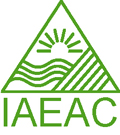Improved insight into environmental issues via high-precision isotopic analysis by means of multi-collector ICP-MS
F. Vanhaecke1, A. Bazzano1,2, M. Grotti2, A. Rua-Ibarz1, E. Bolea-Fernandez1 and A. Maage3
1 Ghent University, Department of Analytical Chemistry, Campus Sterre, Krijgslaan 281 – S12, 9000 Ghent, Belgium
2 University of Genoa, Department of Chemistry and Industrial Chemistry, Via Dodecaneso 31, 16146 Genoa, Italy
3 National Institute of Nutrition and Seafood Research, Strandgaten 229, 5002 Bergen, Norway
Lead (Pb) shows pronounced natural variation in its isotopic composition because three out of its four isotopes are radiogenic – 206Pb, 207Pb and 208Pb are the stable end products of the decay chains of 238U, 235U and 232Th, respectively. There is a large difference between the isotopic composition of ore Pb and crustal Pb, rendering Pb isotopic analysis into a very useful technique for assessing the degree of anthropogenic Pb pollution. With a higher precision, Pb isotopic analysis also enables distinguishing between crustal Pb from various locations or between ore Pb from various mining areas. We report on high-precision Pb isotopic analysis of Antarctic snow using MC-ICP-MS. A combination of analyte enrichment via freeze-drying and the use of a Torch-Integrated Sample Introduction System (TISIS) provided ion signal intensities of sufficient intensity for high-precision isotopic analysis despite the very low Pb concentration level.
Mercury (Hg) shows natural variation in its isotopic composition as a result of both mass-dependent and mass-independent isotope fractionation, thus rendering high-precision isotopic analysis via MC-ICP-MS into a useful tool for unravelling the origin of marine Hg pollution and documenting the chemical processes that Hg undergoes in this environment. Low signal intensity and the occurrence of memory effects was counteracted by using cold vapor generation for sample introduction. This approach was used to evaluate the impact of a huge amount of elemental Hg (almost 70 ton) leaking from a German WWII submarine (U-864) that was sunk near the Norwegian coast in 1945.
Frank Vanhaecke

Frank Vanhaecke (°1966) obtained his PhD degree in 1992 from Ghent University (Belgium). He continued carrying out scientific research as a post-doctoral fellow at the same university and also enjoyed a post-doctoral stay at the Johannes Gutenberg University of Mainz (Germany). Since 1998, Frank is Professor in Analytical Chemistry at Ghent University. As an analytical chemist, Frank has a passion for the determination, speciation and isotopic analysis of (trace) elements via ICP - mass spectrometry (ICP-MS). He is leading the 'Atomic & Mass Spectrometry A&MS' research group that studies fundamentally-oriented aspects of the technique and develops methods for solving challenging scientific problems in an interdisciplinary context. Nowadays, specific topics of research include the direct analysis of solid materials by means of ICP-MS using laser ablation (LA) for sample introduction, the development of speciation strategies based on HPLC-ICP-MS for ADME (absorption, distribution, metabolism and excretion) studies in cooperation with the pharmaceutical industry and high-precision isotopic analysis using multi-collector sector field ICP-MS. Frank is (co-)author of some 300 journal papers, 15 book chapters and has edited a book (together with Patrick Degryse), entitled "Isotopic analysis - fundamentals and applications using ICP-MS". In 2011 he received a "European Award for Plasma Spectrochemistry" for his contributions to this research field and he was nominated "Fellow of the Society for Applied Spectroscopy - SAS" in 2013.

